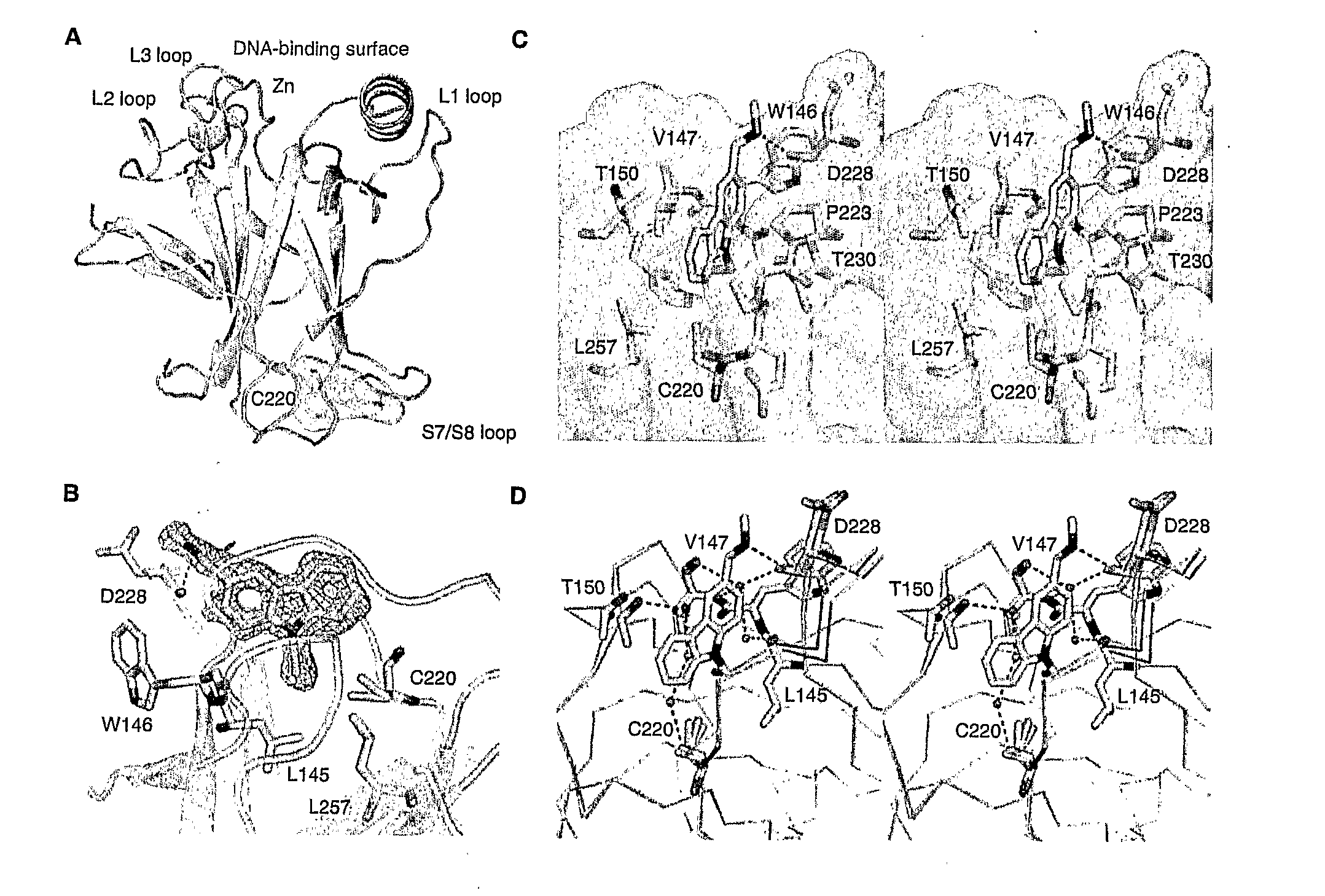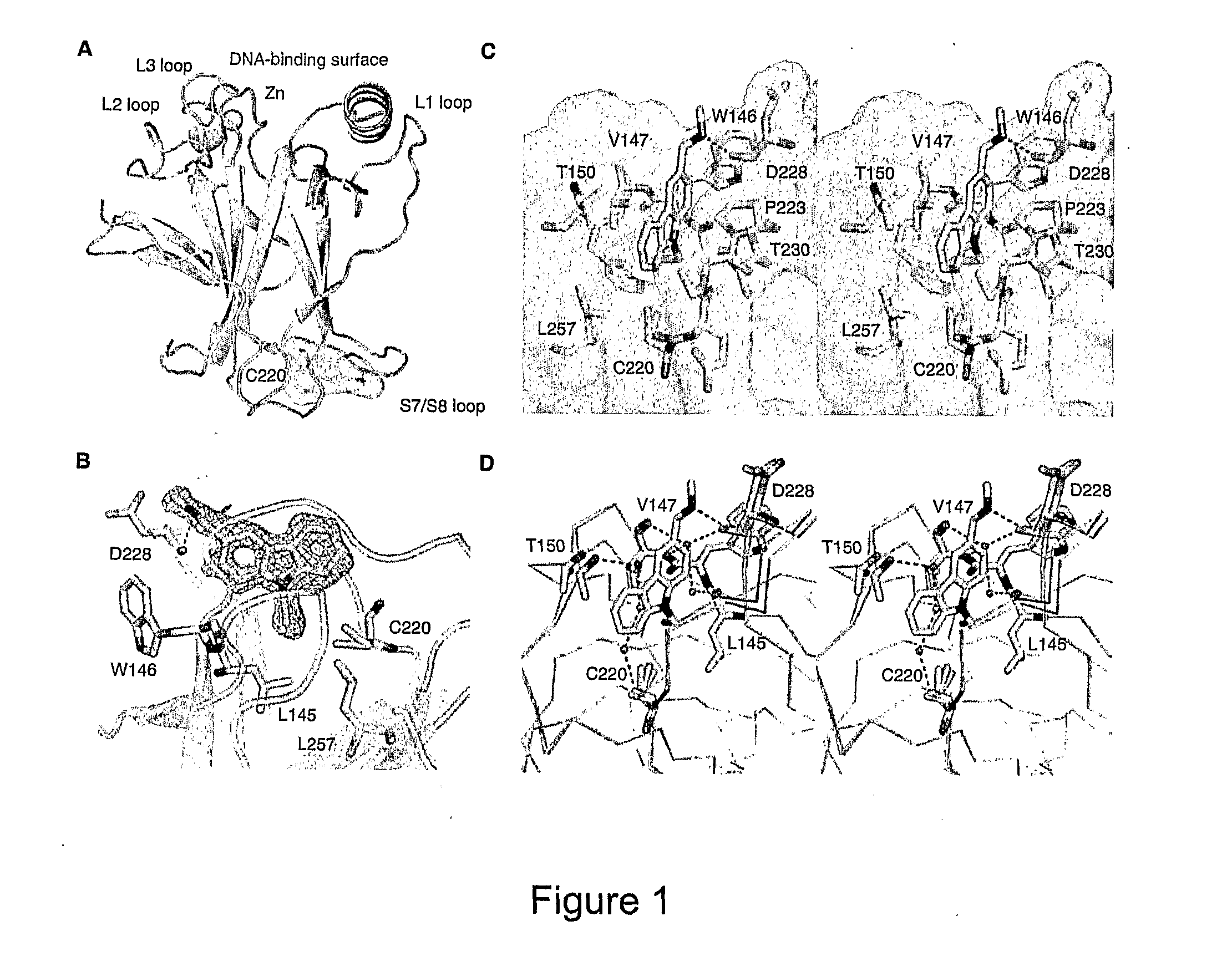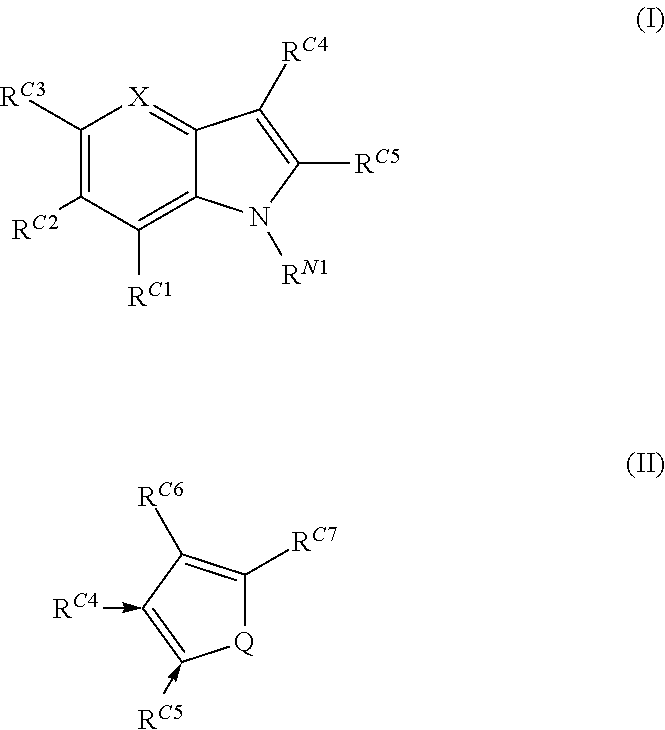Compounds for use in stabilizing p53 mutants
a technology of p53 mutants and compounds, applied in the field of compounds, can solve the problems of complex structure, loss of hydrophobic interactions, and suboptimal packing of these hydrophobic core residues, and achieve the effect of increasing the melting temperatur
- Summary
- Abstract
- Description
- Claims
- Application Information
AI Technical Summary
Benefits of technology
Problems solved by technology
Method used
Image
Examples
examples
[0258]Experimental Procedures
[0259]Protein Expression and Purification
[0260]For crystallographic experiments, the DNA coding for residues 94-312 of T-p53C, the human p53 core domain mutant M133LN203A / N239Y / N268D was subcloned from a pRSET(A) vector into the polylinker region of a pET-24a(+) vector (Novagen) using the Ndel and EcoRl restriction sites (13). The additional point mutation of Y220C was introduced using the QuikChange Site-directed Mutagenesis kit (Stratagene) yielding “constructl”. The mutants were expressed in Escherichia coli BL21 (DE3) or C41 (DE3)—a derivative of BL21, selected for improved soluble expression of globular and membrane proteins (ref A1).
[0261]For all other experiments, the DNA coding for residues 94-312 of T-p53C was inserted into a modified pET24a(+) vector using BamHI and EcoRl restriction sites. The sequence encoding the amino acids 1-85 of the B. stearothermophilus dihydrolipoyl acetyltransferase domain (lipoyl domain, EC 2.1.12, (ref A2)) fused to...
PUM
| Property | Measurement | Unit |
|---|---|---|
| Temperature | aaaaa | aaaaa |
| Temperature | aaaaa | aaaaa |
| Temperature | aaaaa | aaaaa |
Abstract
Description
Claims
Application Information
 Login to View More
Login to View More - R&D
- Intellectual Property
- Life Sciences
- Materials
- Tech Scout
- Unparalleled Data Quality
- Higher Quality Content
- 60% Fewer Hallucinations
Browse by: Latest US Patents, China's latest patents, Technical Efficacy Thesaurus, Application Domain, Technology Topic, Popular Technical Reports.
© 2025 PatSnap. All rights reserved.Legal|Privacy policy|Modern Slavery Act Transparency Statement|Sitemap|About US| Contact US: help@patsnap.com



